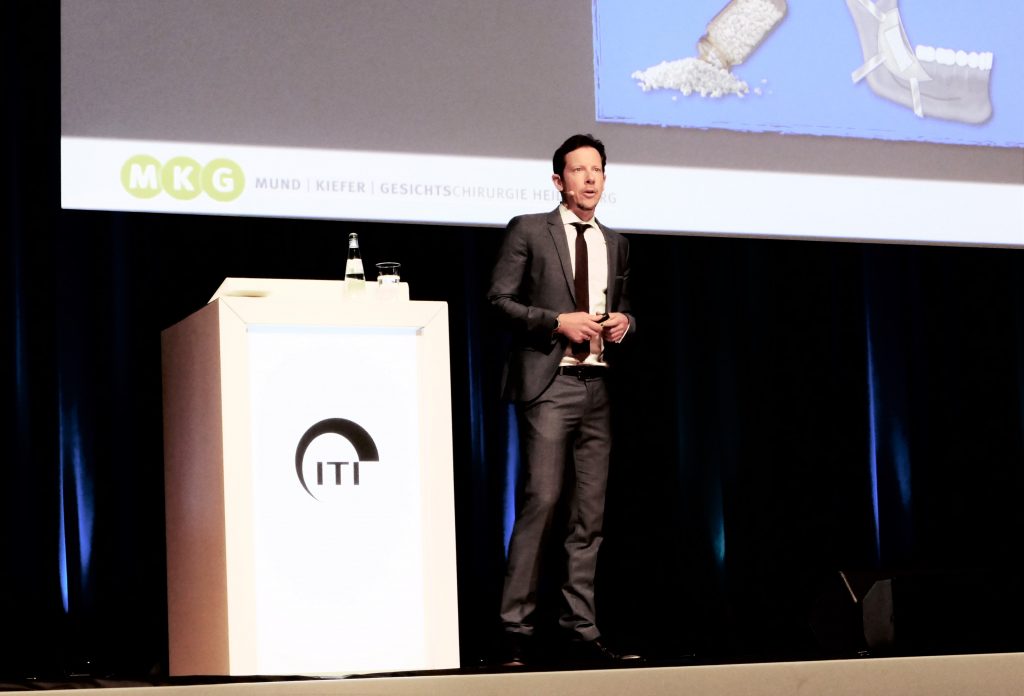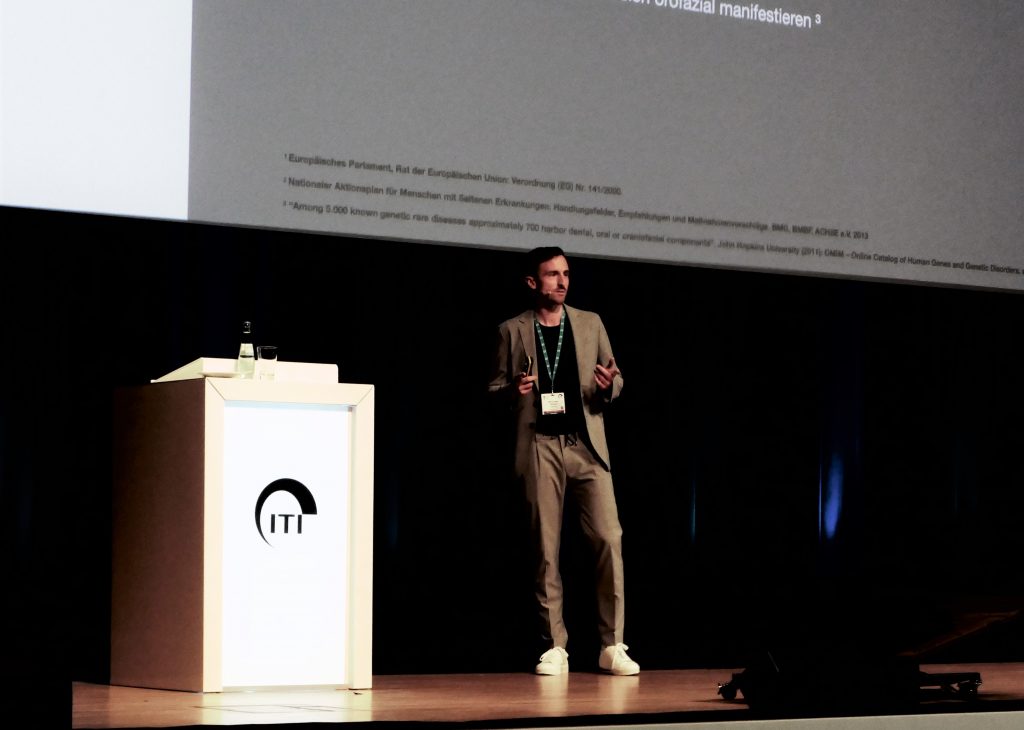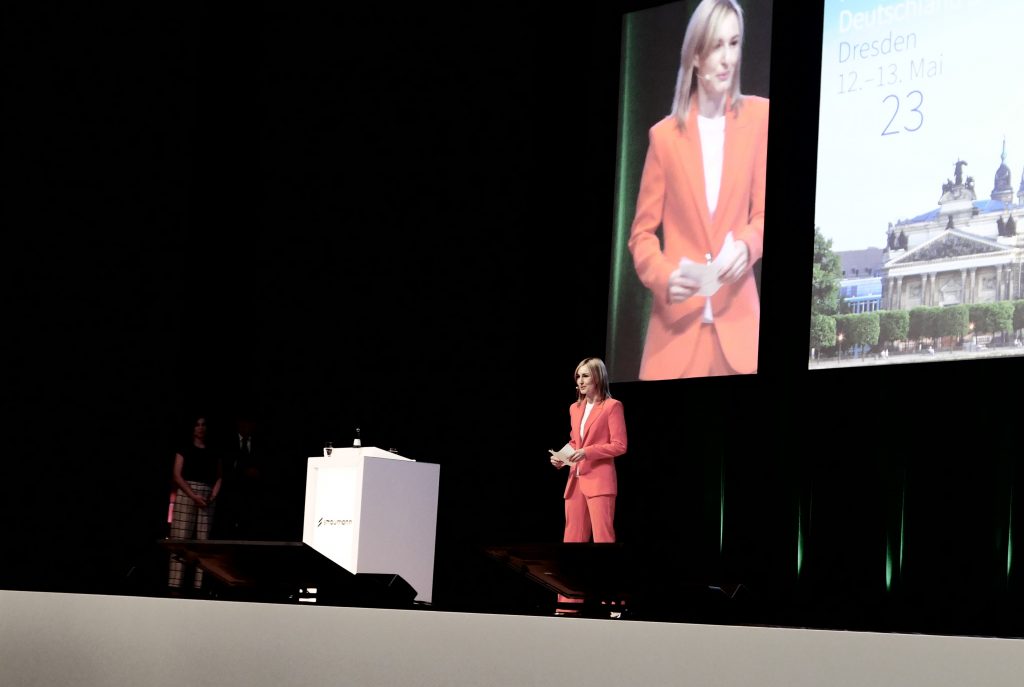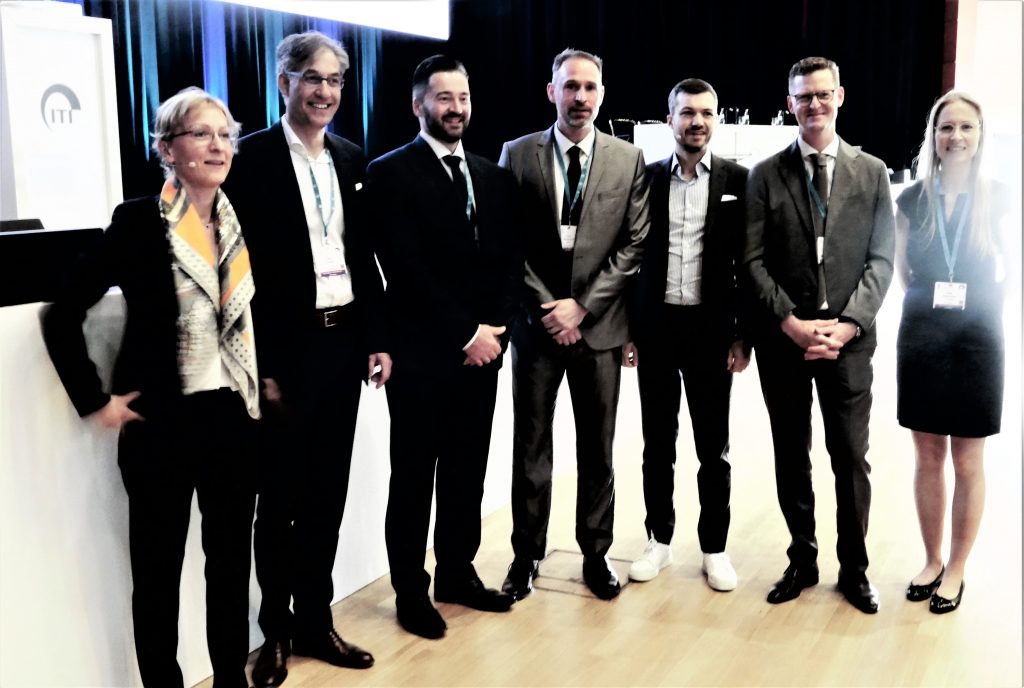“Good things come to those who wait” – if you wanted to apply the oft-quoted saying to a congress, then the ITI Congress Germany & Austria would probably be considered a bull’s eye. The first two attempts failed because of the Corona pandemic, the third was finally successful.
For the second time after 2015, the Saxon metropolis of Dresden hosted an ITI Congress and presented itself from its best early summer side! A charming old town in the direct vicinity of the congress center, a multifaceted program with renowned speakers and an impeccable organization – without a doubt: The trip to Dresden was worth it! The almost 550 congress participants shared this opinion and provided very positive feedback to the organizers.
The congress offered a top-class scientific program, mainly presented by German ITI Fellows and Members, complemented by international experts. In the immediate run-up to the congress, the highly regarded Industry Innovation Forum took place once again, in which renowned speakers focused on implant dentistry topics of the future.















The special lecture
In the special lecture, physicist Kristina zur Mühlen, who originates from Dresden, addressed the question “How do we want to live in the future?”. The focus of her presentation was clearly on the development of conditions of living in cities. Based on countless studies, zur Mühlen anticipates that the number of people living in rural areas will decrease significantly in the coming decades, while those living in cities will increase significantly. Her credo: It’s not necessarily the huge, expensive and difficult-to-implement initiatives that improve urban quality of life, but there are many smaller changes that do so sustainably: Urban gardening, deconstruction of streets, reconstruction of river courses, etc. all contribute to a remarkable cooling of city centers and to a significant improvement in the quality of life.
Patient-centered aspects for sustainable treatment
The first session of the ITI Congress Germany & Austria was not only remarkable from a scientific point of view, it also marked the transition from the previous to the new Leadership Team of the ITI Section Germany, which has been in office since the Fellow Meeting in February. Accordingly, Bilal Al-Nawas, Johannes Kleinheinz and Georg Bach moderated the first part of the session, in which ITI President Charlotte Stilwell also lectured on “Research education as basis for a sustainable implantology”. The areas of science and education are close to the heart of the ITI President, but also of the ITI itself. The ITI has invested 57 million euros in research grants in recent years. Stilwell led the audience on a remarkable journey, presenting the ITI’s many educational and research formats. In this respect, the German Section is both a trendsetter and a benchmark. An impressive example of this was the award for the best Section worldwide in 2022, which Anne Bauersachs recently received at the global ITI meeting in Lisbon.
Past-Chair Johannes Kleinheinz gave an update on the 2020 SAC Tool, which is the ITI product through which many colleagues had their first contact with the ITI. Introduced in the middle of the first decade of this millennium, the SAC classification now required a relaunch, and the related changes and additions were comprehensively presented by the university professor from Münster.
Oral surgeon Eik Schiegnitz spoke about evidence-based definitions of risk profiles – “Fasten your seat belts!” was Schiegnitz’s invitation to the auditorium. And in his lecture, Schiegnitz worked his way through antiresorptives, diabetes mellitus, anticoagulants, and antibiotics. In summary, almost any risk profile can be managed today; the only important thing is the individual decision as to where the limits are reached and, if necessary, a referral to a specialist clinic is appropriate. A summary decision pathway at the end of his presentation may have been the most photographed slide of the entire congress.
The new leadership team with Stefan Röhling, Eik Schiegnitz, Florian Will took over the session moderation under the leadership of the first Chairwoman of the ITI Section Germany, Anne Bauersachs, who – as a link – has already been part of the old Leadership Team.
An eminently relevant topic was taken up by Marcel Hanisch, who spoke about implant-supported treatment of rare diseases in the oro-facial region. He presented and explained two comprehensively documented case studies of rare diseases, one being ectodermal dysplasia and the other being dentinogenesis imperfecta.
Monika Bjelopavlovic and Björn Roland defined “translational implantology” and explained how scientific findings can be implemented in everyday clinical practice. The speaker duo had set themselves the task of addressing three major topics. The first part of their presentation dealt with decision-making on “screw-retained versus cemented”, the second on “drill guides” and the third on the question of “fixed versus removable”. Many practical tips rounded off their presentation.
Tissue Regeneration
The German ITI Section has launched a highly regarded curriculum “Regeneration”, which within a very short time has become a real long runner on the market of curricular training, and has also gained international recognition. Peer Kämmerer, Andreas Pabst and Jochen Tunkel, among others, are very active in this curriculum of the German ITI Section and consequently also chaired this session.
Kai Fischer spoke about modern strategies of peri-implant soft tissue management and asked “is the autologous graft still up to date?”. He pointed out that it may well be more convenient for patients if the dentist uses a blister pack instead of harvesting from the palate. Nevertheless, the autologous graft, according to Fischer, still represents the gold standard for many indications, in particular for complex defects and recessions. For horizontal and vertical soft tissue thickening, however, acellular matrices have established themselves as an alternative to the autologous graft.
Peer Kämmerer assessed allografts with a view to the future and questioned the corresponding long-term evidence. He pointed out that with the availability of freshly frozen bone, a variety of applications emerge, although these are also associated with some complications (immunological potency, antibody development). Meanwhile, other allografts with validated sterilization are used in dentistry and maxillofacial surgery, all of which are among the best-controlled bone graft substitutes. Autograft has proven to be problematic in terms of harvesting morbidity, while allografts have proven to be problematic in terms of complete integration. Long-term data show that both procedures work reliably. Kämmerer offered an important note for the extent of augmentation: “Never go beyond the sceletal envelope, avoid overaugmentation!”.
Ulrike Schulze-Späte evaluated the influence of bone metabolism on long-term therapeutic success in tissue regeneration in compromised patients. She defined the biological approach as the central pillar of success. The focus here is on observing patient-specific factors.
The last presentation of the session focused on esthetics. Martin Gollner spoke about esthetics as the result of successful hard and soft tissue management. He emphasized that perfect red-white esthetics require time and proven concepts.
Surgery and prosthetics
The symbiosis between dental technology and implantology has traditionally been very important at the ITI, so it was only logical that, under the chairmanship of Julia Bauer, Sascha Virnik and Ulrike Webersberger, a session dedicated to surgery and prosthetics was integrated into the scientific program.
Oral surgeon Christian Mertens spoke on “Complex reconstructions using digital technology: the young patient.” According to the speaker, different conditions apply to young patients compared to other patients. Here, the digital workflow, if performed consistently, offers a high degree of predictability and therapeutic safety. Mertens’ main concern was the comprehensive presentation and explanation of decision paths, which he did successfully using numerous clinical cases.
The speaker duo Kai-Hendrik Bormann and Matthias Müller (rhetorically) asked whether there are any limits at all to the complex treatment of edentulous patients. Professor Bormann took over the surgical part and Dr. Müller the prosthetic part. The presentation centered around a comprehensively illustrated patient case in which all the existing teeth in the maxilla, including those that could still be preserved, were extracted and replaced with an “all-on-six” fixed bridge. The restoration was presented step-by-step, thus illustrating the immense effort that went into it.
Irena Sailer gave a “Ceramics Update” with the goal to also provide guidance for everyday clinical practice. “Hot off the press, I can give you the results of the ITI Consensus Conference, which ended a week ago!” said Professor Sailer in her introductory remarks. For multi-unit reconstructions in the posterior region, 32 studies could be evaluated: The classic three-unit bridge (two anchors, one pontic) showed a very good survival rate, both for the classic metal-ceramic design and for the one with zirconium dioxide. There were also no statistically significant differences in the loss rate. Thus, the zirconium dioxide restoration
can be considered a reliable option. Complications were noted in the form of chipping, screw fractures, loss of retention, etc. Within the all-ceramic versions, the monolythic versions proved to be advantageous with regard to complications, while the veneered ceramic versions showed poorer results. Bridges on implants should therefore be made of monolythic zirconia materials. Similar results were found for splinted single crowns. No significant differences were found between crowns and bridges in a direct comparison, so that a reduction of implants can definitely be carried out. Valuable information for everyday clinical practice!
Young ITI Session
Another new format launched by the ITI Section Germany is “Convince within seven minutes!”. In six short presentations of seven minutes each, the presenters had to deliver a concise but convincing statement. Tabea Flügge spoke about “digital surgery”, Robert Würdinger about “augmentations”, Stefan Röhling about “ceramic implants”, Christian Schmitt about “soft tissue”, Daniel Bäumer about “digital prosthetics” and Frederic Kauffmann about “peri-implantitis”. Indeed, an unconventional format, and at the same time a very attractive one, ein particular for the generations Y and Z.

The poster prize was awarded to Diana Heimes, who presented her results on “Vestibuloplasty with a 3D Collagen Matrix” in another short presentation.
Disputation
The disputation in the form of an academic debate is also a special feature of the ITI, although it has recently been seen at one or the other specialist congress in more or less modified forms. Even though this year’s topic could probably have led to a real collegial dispute just a few years ago – “Does immediate treatment represent a sustainable treatment concept and where are the limits?” – this year’s panelists were less concerned with the controversy than with outlining the actual limitations of this treatment option. One thing was made clear, the question of success or failure is to be sought primarily in the individual expertise and skill of the practitioner.





